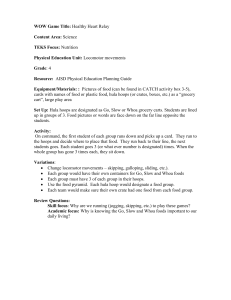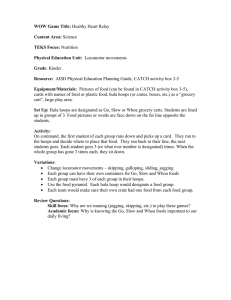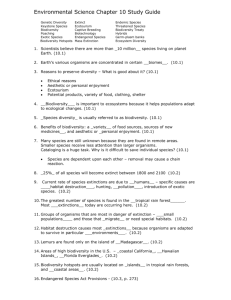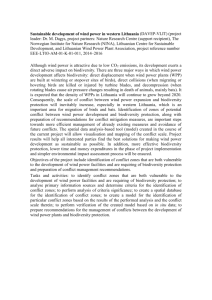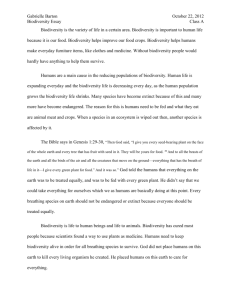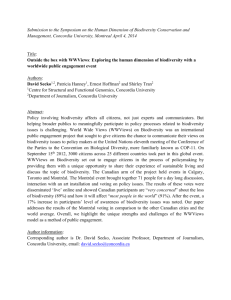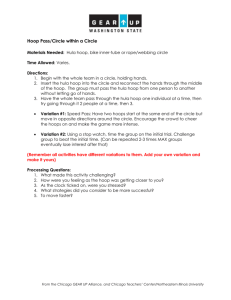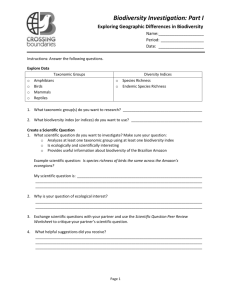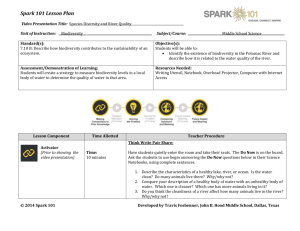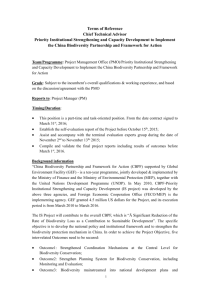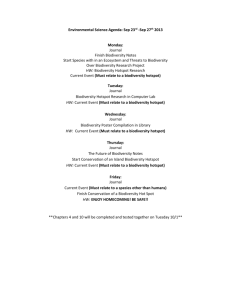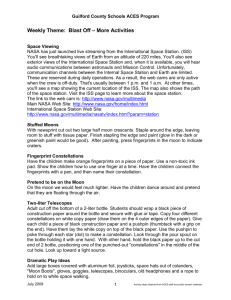T O Hula Hoop Biodiversity
advertisement
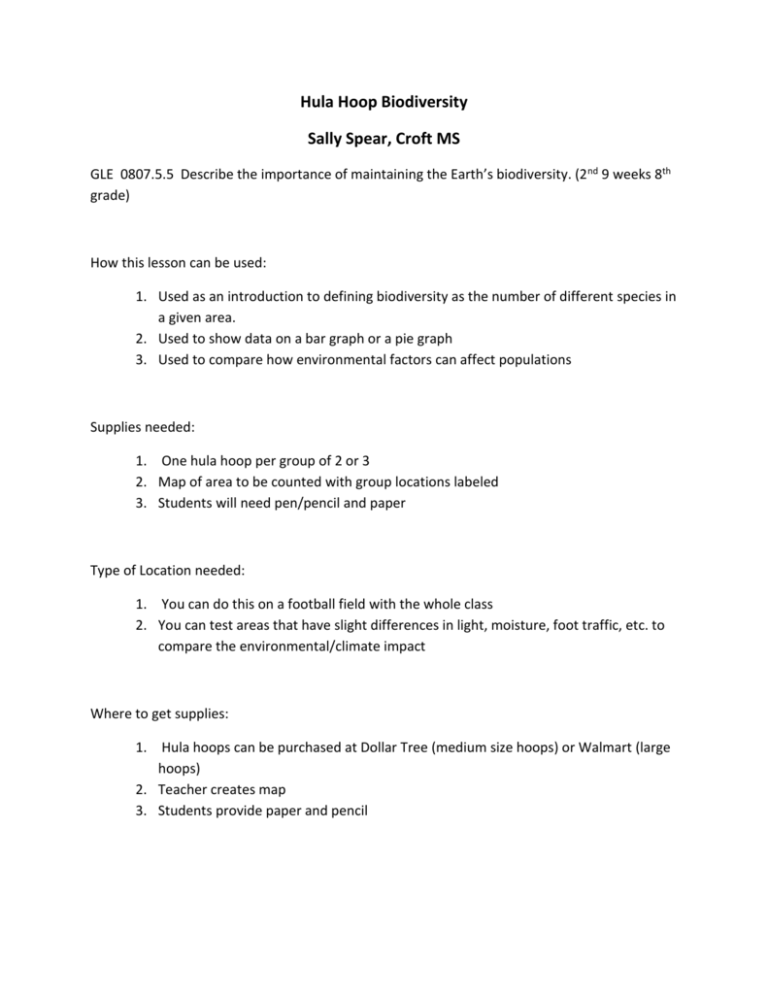
Hula Hoop Biodiversity Sally Spear, Croft MS GLE 0807.5.5 Describe the importance of maintaining the Earth’s biodiversity. (2 nd 9 weeks 8th grade) How this lesson can be used: 1. Used as an introduction to defining biodiversity as the number of different species in a given area. 2. Used to show data on a bar graph or a pie graph 3. Used to compare how environmental factors can affect populations Supplies needed: 1. One hula hoop per group of 2 or 3 2. Map of area to be counted with group locations labeled 3. Students will need pen/pencil and paper Type of Location needed: 1. You can do this on a football field with the whole class 2. You can test areas that have slight differences in light, moisture, foot traffic, etc. to compare the environmental/climate impact Where to get supplies: 1. Hula hoops can be purchased at Dollar Tree (medium size hoops) or Walmart (large hoops) 2. Teacher creates map 3. Students provide paper and pencil Length of Lesson: 1. 2. 3. 4. 5. 6. 7. Instructions and gathering materials (5-10 minutes) Travel time (varies per school, usually 5 minutes) Outside organization (5 minutes) Counting species (10-15 minutes) Gathering back together (5 minutes) Travel inside (5 minutes) Draw conclusions and discuss findings (10 minutes minimum, longer depending on your desired outcome) Helpful Hints: 1. I have students look at pictures of areas to practice looking for different species in the days prior to going outside. 2. I actually use this initially to practice graphing and drawing conclusions. I keep a copy of their data until November. When I start the biodiversity unit, I bring the data back out and we look at which area had the most biodiversity, why there were differences in areas, and what could cause the biodiversity to change in the future. 3. Assign groups before going outside. 4. Take extra paper and pencils with you (someone will always leave them in the room) 5. Spread the groups out enough that you can walk between them several times, but not too class that one group can hear another. 6. Have a back-up plan in case of bad weather or muddy conditions. 7. Ask your principal if there is a spare radio you can take outside with you – if not, take your cell phone. 8. Set a timer on a watch/cell phone so you are not rushed getting back into the building. I usually set it for 15 minutes before class is over or before it is time for the next part of the lesson. 9. Take graph paper outside with you for the groups that finish first. 10. Consider checking out plant identification guides from the library and have a contest of which groups can accurately identify the most plants (this is a great way to fill time for your fast groups).

